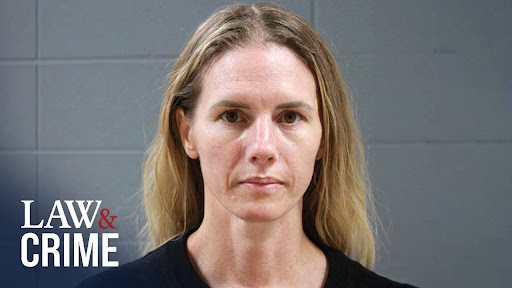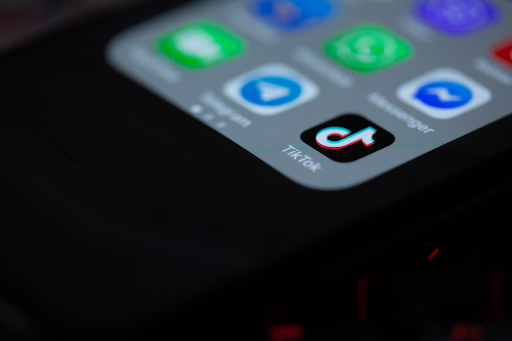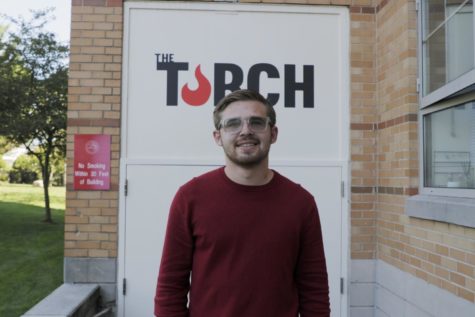
When students returned to campus in the spring of 2021, COVID-19 was peaking following holiday travel. A slew of actions followed to prevent the spread of the virus at St. John’s University. Mandatory COVID-19 testing, quarantine periods and more random testing were put in place before classes had even started. This semester, as Omicron is a highly-transmissible — yet less severe — COVID-19 variant, few of these policies remain.
Students were allowed to return to campus at any time during the first week of the semester, from Jan. 17-21. Unlike in prior semesters, no testing was required before entering the dorms (though it was required for resident students). Since the pandemic began, the University required students to remain in their cars or in Marillac Hall until receiving a negative test result. No such requirement was in place for the Spring 2022 semester.
“The COVID-19 testing expectation is in place again this Spring semester as students return to campus,” St. John’s University spokesperson Brian Browne told The Torch in a statement. “Students were directed to make their testing appointment on the day they arrive for move-in, or the following day if they arrive after testing hours.”
“We are very fortunate to continue to have access to and provide rapid tests this semester,” Browne continued. “For the most part, students receive test results on the same day, typically within a few hours.”
So, what did that slight change mean? It meant that students could move into campus, begin classes and find out midweek that a suitemate had tested positive, derailing the start of their semester. That’s what happened to me. I moved in on Monday, went to my first class Wednesday, only to find out a suitemate had tested positive shortly after moving in that same day. Despite the University’s policy, “Students were instructed to wear their masks until they receive a negative test result,” the COVID-19 contract tracers deemed me a close contact.
There’s a few issues with how the process played out. First, if the University simply instructed students to remain in a common space or their cars before moving in, no one in the dorms would be considered a close contact, should a suitemate test positive. They’ve had no problem requiring this before.
The University’s response as to why this policy was changed was that “testing procedures evolve based on public health guidelines, our vaccination compliance and booster requirement,” according to Browne. This is inconsequential, as we now know breakthrough cases are more common than ever with the Omicron variant.
The other concerning factor is that the University allowed students to continue to move in later in the semester’s first week. You see, if everyone moved in before Jan. 19 — the first day of classes — anyone subjected to a five-day quarantine would only miss the first class of each course. By allowing people to move in as late as Friday, close contacts to confirmed positives could miss as many as three classes to start the semester.
My case was particularly unique. While I was in a computer programming class on Wednesday — a three-hour class — a suitemate tested positive, and shortly I had been notified of a mandatory five-day quarantine. That’s right, anyone in the same suite as a COVID-19 positive could be subjected to a quarantine period. I do emphasize “could,” because not everyone in the suite was quarantined. In fact, three emails sent to the COVID-19 positive and the close contacts revealed three different policies for isolation or quarantine, with absolutely no consistency.
So, how did I get out? It certainly wasn’t easy. To speak to someone about a COVID-related issue, you’ll first need to call the University’s COVID-19 hotline (718-990-2700). There, you have to leave a message and await a call back. Be sure to expect a return phone call from a private number, because St. John’s can’t let you speak to a human representative on the first try.
Browne said the following in regards to COVID-19 contact-tracing quieres:
“Every resident student placed in isolation or quarantine receives a personal phone call from the Office of Residence Life explaining instructions and answering questions. In addition, students are sent email instructions, which are quite detailed, summarizing key points discussed and with additional context and helpful information.”
“The helpline contact information is found in our isolation/quarantine procedures that state: ‘If you have questions about the duration of your isolation period please call 718-990-2700.’ Students in isolation are also contacted by the Contact Trace Team to answer any questions, and whenever possible, a representative from the Health Office speaks directly with the student to answer questions when moving to isolation. The “Keeping St. John’s Healthy” link on our website is another helpful resource for the latest information.”
Although the policies seem helpful on paper, that simply wasn’t my experience. Calls with Residence Life instructed me to call the COVID-19 hotline, which went directly to voicemail each time I called. Student Health Services said the same, which led to more left messages. In all, I left a total of five messages before receiving a call back nearly 24 hours later.
While in isolation, Residence Life informed me that my StormCard would be deactivated and food would be delivered to my room. The food? A pre-packed bagel with a single serving of cream cheese and a sandwich, alongside a somewhat fresh dinner. That would be fine — certainly not worth the thousands of dollars an unlimited meal plan costs — until I found out that it’s the same bagel and sandwich every single day.
Here’s the fun part. Residence Life doesn’t actually deactivate the StormCards of students in isolation – at least, not mine. How do I know? Thanks to a fire drill in Century Hall stemming from a bagel-microwave incident — perhaps a crusty bagel sent by Residence Life to a quarantined student — the building was evacuated, including students in self-isolation. On my way into the building, my StormCard worked as it should. I tested it on the suite door every few hours, expecting it to be shut off eventually, but that never happened. Students in self-isolation can come and go as they please.
“The procedure for students in isolation is to have their StormCards deactivated while in isolation,” Browne noted. “StormCards are manually activated and inactivated and like any modern technology, there can be lags in operational time.”
Regarding my personal situation involving leaving for a fire drill, Browne added, “All students are required to leave the building during a fire drill and should wear a mask and socially distance as much as possible.”
This means one of two things are true. Either the University itself doesn’t believe in its policies enough to enforce them, and it’s all just for show, or it’s too lazy or understaffed to uphold the policies. Regardless, it’s the latest evidence of St. John’s failing to implement and uphold COVID policies to protect students.
If you’re reading this in quarantine, and you believe the designation is in error, reach out to every University entity you know of. Residence Life (for resident students), the COVID-19 hotline (If they decide to return your call), Public Safety (the only phone number that connects you to a person) or Student Health Services (who surprisingly have no say in COVID-related issues). The University has an obligation to keep its students safe, but it also has the responsibility to refrain from putting undue burdens on the students who keep the University running.
“As together we all respond to the ongoing challenges and realities of the global COVID-19 pandemic, the University continues to implement ways to protect the health, safety, and wellness of our University community,” Browne concluded. “A spirit of collaborative cooperation and continued patience and understanding is essential as we endeavor to deliver services during this pandemic.”


















